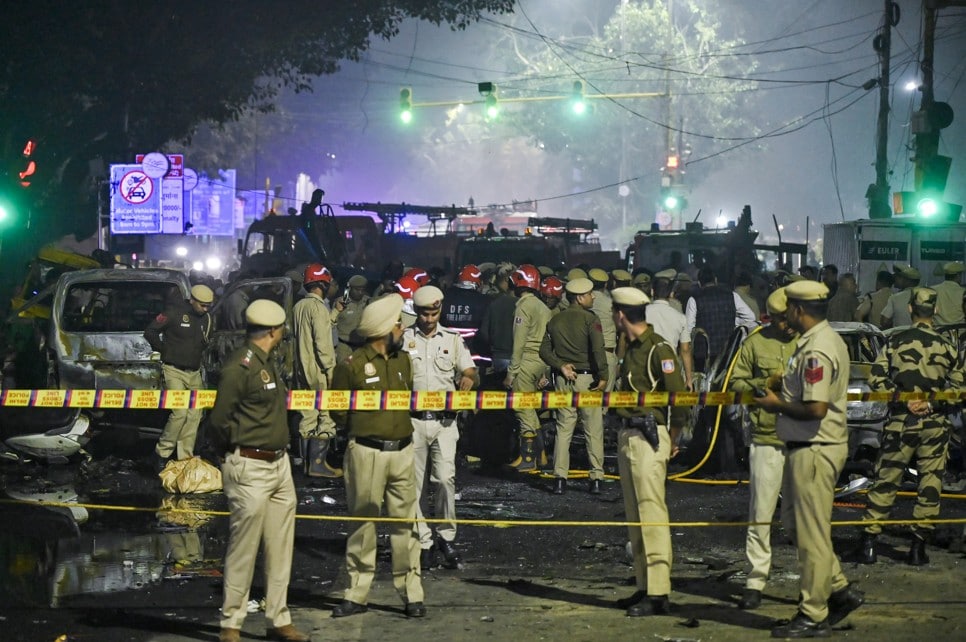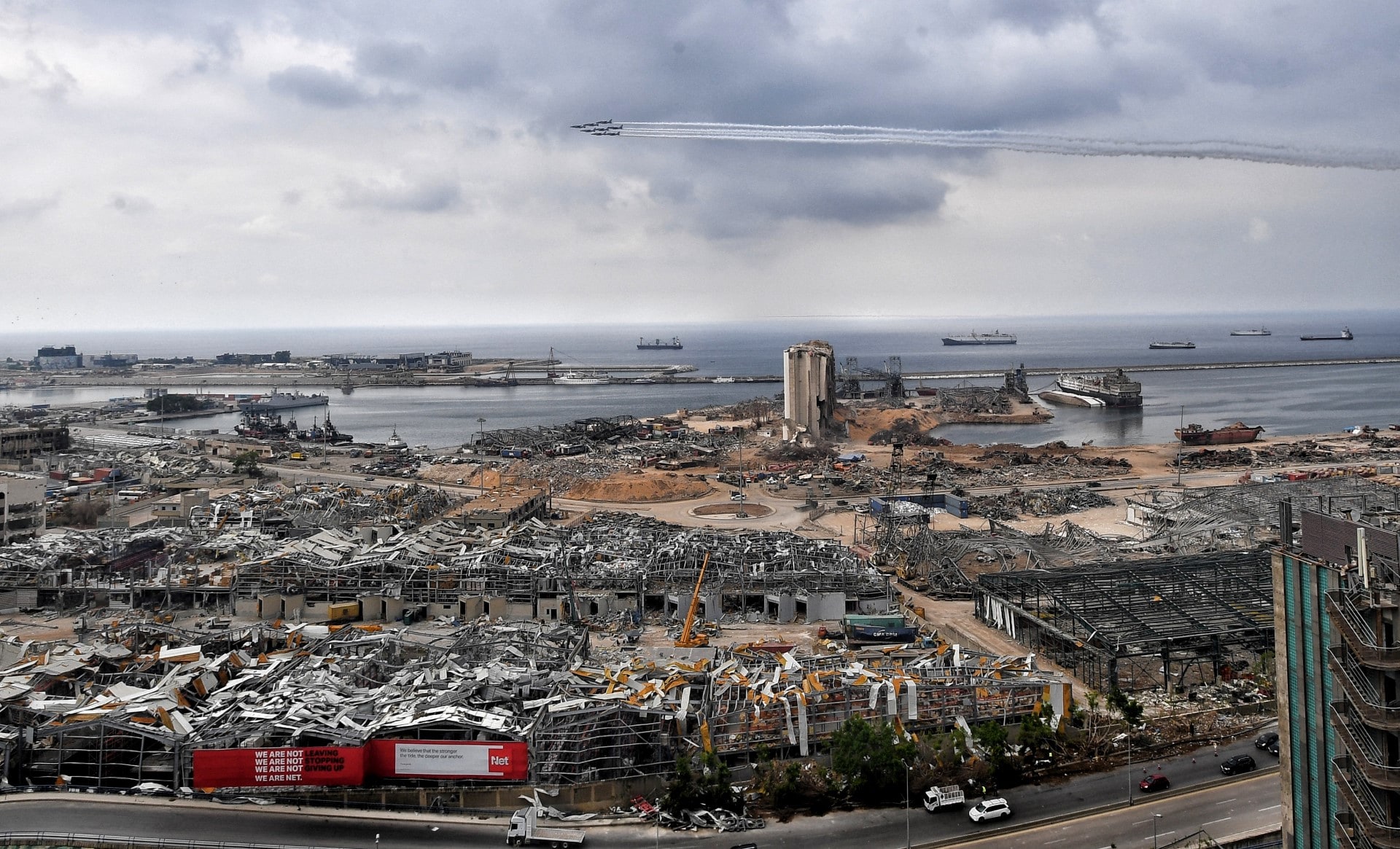
As the probe widens into the Delhi car blast, which killed at least nine people on Monday, one of the theories is that it might have been unintentional. Investigators are exploring whether the explosion was triggered accidentally while the suspect, Umar Mohammad, drove around with explosives in the back seat of his car.
This would have parallels to the 2020 Beirut port blast, one of the largest non-nuclear explosions in history, which damaged over half the city. The blast in the Lebanese capital was triggered after an estimated 2,750 tonnes of unsafely stored ammonium nitrate exploded accidentally.
ALSO READ: Ammonium Nitrate In Delhi Red Fort Blast. How Is It Different From RDX?
One Theory Around Delhi Blast

PTI
Days before the blast, police had seized 2,900 kg of bomb-making material, including 350 kg of ammonium nitrate, along with timers, as well as assault rifles, handguns and ammunition, from the residence of Mujammil Shakeel, a medical professional at the Al-Falah Hospital in Haryana's Faridabad. Police suspect Mujammil and Umar were associates.
Investigators now suspect that Umar might be carrying an unspecified amount (as of yet) of Ammonium Nitrate Fuel Oil (ANFO), a common industrial explosive made by mixing porous ammonium nitrate with fuel oil, packed into his Hyundai i20 when the car exploded near gate number one of Red Fort metro station.
After a preliminary probe, police sources said no crater was formed at the site of the blast, as is usually seen in explosions involving high-intensity devices. Projectiles were also not found at the site, indicating the explosive device was not configured for maximum damage.
This led probe teams to an assessment that Umar might have "panicked" after two of his associates - believed to be key members of a Faridabad-based Jaish-e-Mohammed terror module - were arrested and triggered a blast while trying to move the explosive.
ALSO READ: Delhi Blast Suspects Planned Diwali Attack, Aborted It Later: Sources
The Beirut Reminder

AFP
The catastrophic explosion on August 4, 2020, occurred at 6:07 pm, when a fire broke out in a large hangar at the port of Beirut, where fireworks and an estimated 2750 tonnes of ammonium nitrate were unsafely stored. The explosives had reportedly been left there for years. The fire led to a massive explosion that killed at least 218 people and left 7,000 others injured.
The blast is considered one of the biggest non-nuclear explosions to have been recorded and damaged a major part of the city, with infrastructural damages estimated at over US $10 billion and the displacement of over 300,000 individuals.
Later, investigators found the ammonium nitrate cargo was stored in the hangar for over six years after the Lebanese Port authorities confiscated it from a Moldova-flagged ship making its way from Georgia to Mozambique.
Owned by a Russian businessman, the Rhosus merchant vessel was forced to dock in Beirut after facing technical problems at sea. The ship was subsequently impounded by the Lebanese authorities for failing to pay port fees, and in 2014, its cargo was eventually unloaded and stored in a warehouse at the port.
In the years that followed, several safety warnings were sent to multiple high-level officials, but nothing was done.
Also Read: Nightmares, Flashbacks, Fatigue: Beirut Faces Mental Health Crisis After Blast
About Ammonium Nitrate

AFP
Ammonium nitrate is an odourless, white crystalline chemical that is commonly used to make fertiliser and explosives. It is a powerful oxidiser and, under the right conditions, can cause a massive explosion that involves the rapid decomposition of the chemical compound into a large volume of hot gases.
The decomposition reaction from an ammonium nitrate bomb produces an exothermic reaction, releasing nitrous oxide and water vapour, which expand rapidly (up to 1,000 times the initial volume). This generates a supersonic shockwave that causes extensive physical damage in the surrounding area. The explosion also releases noxious and toxic gases, including nitrogen oxides (specifically a characteristic red-orange plume of nitrogen dioxide) and ammonia, which can pose a health risk to people in surrounding areas.
The reaction also generates significant heat, with temperatures reaching up to 2,000 degrees Celsius in the immediate vicinity.
But on its own, ammonium nitrate is not considered an explosive.
It needs to be mixed with a secondary substance - in the Red Fort bomb that was fuel oil, a petroleum-based product - and triggered by an external detonation to explode.
Track Latest News Live on NDTV.com and get news updates from India and around the world

